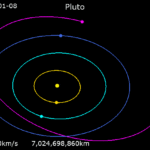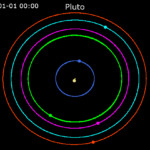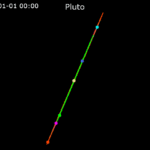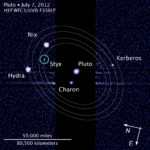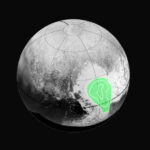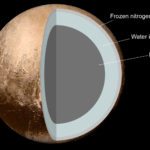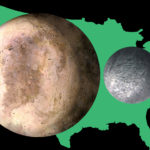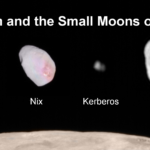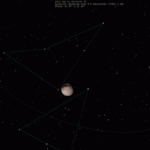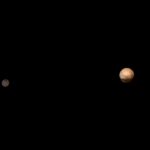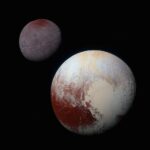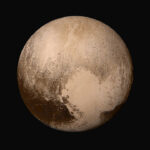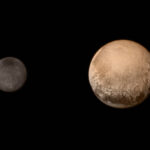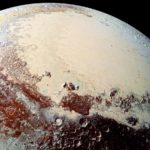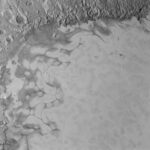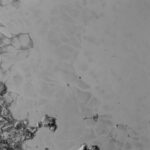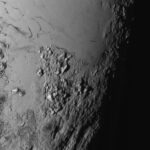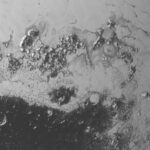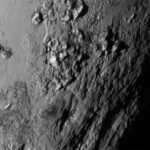This tiny planet now serves as a giant ‘hotel & gas station’ of sorts; its moon Charon was thawed to reveal and test the Mass Relay previously imprisoned within, and traffic here is now high, its other two mini-moons now in new stable orbits around their main.
–
Table of Contents:
- Spec’s
- Moons
- History
- Maps (Images Begin)
- Comparisons and Info
- Far Orbit
- Low Orbit
–
Planet Info:
Farthest of the originally-acknowledged ‘9’ planets of the Sun, this one has the most eccentric / elliptical orbit of those 9. It is the smallest, coldest, slowest-moving, and most-affected by the gravities of its moons.
| Discovery | |||||||||
|---|---|---|---|---|---|---|---|---|---|
| Discovered by | Clyde W. Tombaugh | ||||||||
| Discovery date | February 18, 1930 | ||||||||
| Designations | |||||||||
| MPC designation | (134340) Pluto | ||||||||
| Pronunciation | /ˈpluːtoʊ/ ( |
||||||||
|
Named after
|
Pluto | ||||||||
| Adjectives | Plutonian | ||||||||
| Orbital characteristics[1][b] | |||||||||
| Epoch J2000 | |||||||||
| Earliest precovery date | August 20, 1909 | ||||||||
| Aphelion |
|
||||||||
| Perihelion | |||||||||
|
|||||||||
| Eccentricity | 0.2488 | ||||||||
| 366.73 days[2] | |||||||||
|
Average orbital speed
|
4.67 km/s[2] | ||||||||
| 14.53 deg | |||||||||
| Inclination |
|
||||||||
| 110.299° | |||||||||
| 113.834° | |||||||||
| Known satellites | 5 | ||||||||
| Physical characteristics | |||||||||
|
Mean radius
|
|||||||||
| Flattening | <1%[6] | ||||||||
|
|||||||||
| Volume |
|
||||||||
| Mass | |||||||||
|
Mean density
|
1.854±0.006 g/cm3[4][6] | ||||||||
| 1.212 km/s[f] | |||||||||
|
Sidereal rotation period
|
|
||||||||
|
Equatorial rotation velocity
|
47.18 km/h | ||||||||
| 122.53° (to orbit)[2] | |||||||||
|
North pole right ascension
|
132.993°[7] | ||||||||
|
North pole declination
|
−6.163°[7] | ||||||||
| Albedo | 0.49 to 0.66 (geometric, varies by 35%)[2][8] | ||||||||
|
|||||||||
| 13.65[2] to 16.3[9] (mean is 15.1)[2] |
|||||||||
| −0.7[10] | |||||||||
| 0.06″ to 0.11″[2][g] | |||||||||
| Atmosphere | |||||||||
|
Surface pressure
|
1.0 Pa (2015)[6][11] | ||||||||
| Composition by volume | Nitrogen, methane, carbon monoxide[12] | ||||||||
Further details here.
Another couple interesting facts about Pluto are that 1) it has a planet-wide canyon, and 2) it has a stand-alone mountain surrounded by a moat-like body of water; a circular lake around its base. Are these evidence of civilization? Further studies on-site are being conducted to find out.
–
Pluto’s Moons:
This tiny planet really only has one moon worth mentioning; the other four known ones are so small that they barely qualify, and are more like captured Space rocks than anything else.
The most interesting thing about the Pluto-Charon system is that Charon is nearly half-composed of ice; something that made it fairly easy to thaw and remove from around the special object found to be frozen within its core. This moon-melting operation took place throughout much of 2149, the resulting ice and rock debris largely being pulled into Pluto’s orbit, eventually settling across its surface, at which point it was harvested for use in natural shielding of new and existing facilities on and near the surface of Pluto; free, abundant, and already dislodged building materials for years to come.
Details on the moons are here and here.
–
History:
The Mass Relay hidden inside it for millennia was found by humans in 2149 after SSP operations on and mining down into this small world (which had begun a century and a half earlier) finally detected its anomalous signature.
–
Maps:
–
Comparisons and Info:
–
Far Orbit:
–
Low Orbit:
–
